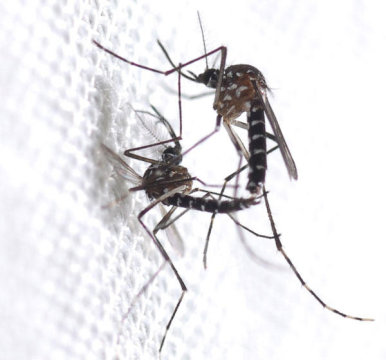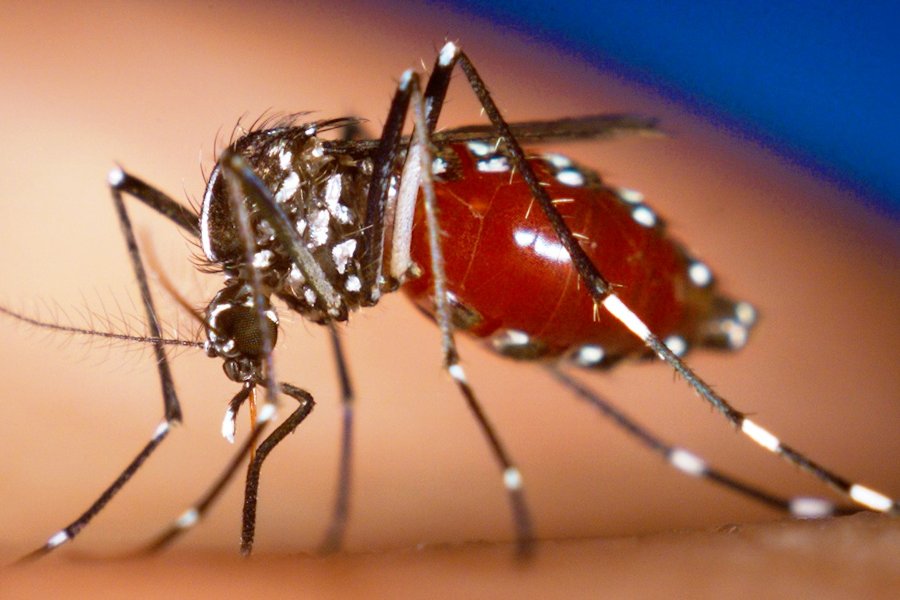Costa Rica Health News – I know I have said it before but the only thing I ever worry about in Costa Rica are the viruses carried by mosquitoes, dengue and chikungunya. I never worry about snakes, poisonous frogs or other creepy crawly bugs, but these two I have seen take down the most healthy of humans.
 Chikungunya, a painful, mosquito-borne virus that’s spreading fast across the Americas, can be more serious than feared, researchers report.
Chikungunya, a painful, mosquito-borne virus that’s spreading fast across the Americas, can be more serious than feared, researchers report.
They found it can cause a serious brain inflammation called encephalitis far more frequently than reported before. That’s bad news for Latin America and the Caribbean, where the rate of infection is about a million people a year.
“Since there is no vaccine to prevent chikungunya and no medicine to treat it, people who are traveling to these areas should be aware of this infection and take steps to avoid mosquito bites, such as wearing repellent and long sleeves and pants if possible,” said Dr. Patrick Gérardin of Central University Hospital in Saint Pierre, Reunion Island, who led the study.
Chikungunya is not usually deadly, but it can cause a very bad headache, joint pain, rash and fever. Its name in the Makonde language, spoken in Tanzania and Mozambique in Africa, means “it bends up,” because patients are often contorted with pain. They can spend weeks in bed, racked with pain.
The virus only arrived in the Western Hemisphere in December 2013, on St. Martin. But it spread fast and has been found as far north as Florida and across Central and South America.
More than 600,000 cases have been reported so far this year, with 76 deaths, according to the Pan American Health Organization. In 2013 and 2014 more than 1.1 million cases were reported and it killed 194 people.
Gerardin and colleagues studied an outbreak on Reunion Island in 2005 and 2006. They went back through medical records and found encephalitis had been diagnosed in 8.6 per 100,000 people. That’s a much higher rate than previously believed, they reported in the journal Neurology.
Encephalitis was more likely in infants and people over 65. The incidence rate in infants was 187 per 100,000 people; it was 37 per 100,000 people in people over age 65, they found.
“These numbers are both much higher than the rates of encephalitis in the United States in these age categories, even when you add together all the causes of encephalitis,” Gérardin said.
They said it’s higher than the rate of encephalitis the United States from West Nile virus and similar infections between 1999 and 2007.
West Nile was only introduced into the United States in 1999, but it quickly spread to all 50 states as well as Canada and Mexico. Since then, it’s infected hundreds of thousands of people, causing severe illness in about 40,000 and killing more than 1,600.
Fewer than 1 percent of people who are infected will develop a serious neurologic illness such as encephalitis or meningitis (inflammation of the brain or surrounding tissues).
Symptoms of encephalitis or meningitis include headache, high fever, neck stiffness, disorientation, coma, tremors, seizures, or paralysis.
There’s no vaccine against either chikungunya or West Nile and the only treatment is rest and pain relief.
From NBCnews.com edited by Dan Stevens

